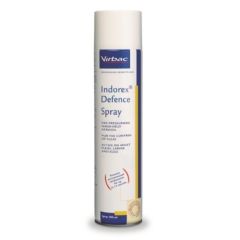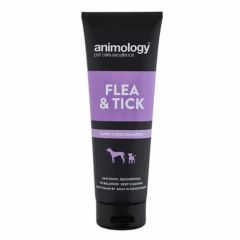Got Fleas?
Have you experienced flea problems with your pets or at home? In this blog we are looking at how to effectively manage and treat a flea infestation.
What Are Fleas?
Fleas are an endocytic parasite that live on the skin of our pets. They jump from host to host; meaning they pass from animal to the home and even humans. Did you know fleas can jump as high as 18 inches, so never underestimate where they could end up!
Fleas, like mosquitoes and ticks, feed off blood from their host. They latch on and inject a sharp, nose-like projection into the host to ingest a blood meal. Once full, they are then able to reproduce and lay fertilized eggs. Flea eggs hatch between one and ten days, and flea larvae are able to feed on blood and adult flea droppings (flea dirt) before emerging as adult fleas.
It is thought that live fleas only make up around 10% of a total flea population within an environment, with the remaining 90% being made up of their eggs and larvae around the home.
Dogs and cats do have their own species-specific flea species (simply named dog-fleas and cat-fleas), however, they do share these infestations. Cat-fleas are notoriously hardier and more difficult to get rid of than dog-fleas whether they have infested a cat or a dog. Regular flea treatments and household management is therefore incredibly important for both owners of dogs, cats or both.

How can they pass around the home so quickly?
As mentioned above, fleas can jump very high and tend to leave a situation when they feel unsafe. They are excellent at hiding somewhere inconspicuous (gaps behind furniture, gaps between floor boards, deep in carpets, etc.) until a host passes by.
Fleas lay their eggs somewhere warm and safe, whether this be on your pet, in your pet’s bedding, or on your soft furnishing. They are not sticky, so once laid they tend to drop off the surface and fall to the floor until they are ready to hatch.
Fleas can remain dormant for many months at a time, usually over the winter months. They tend to emerge as the environment warms up or is disturbed (by vacuuming or moving furniture, for example). Many pet owners report an increased flea infestation in the Spring, however it is most likely that these fleas were dormant over the winter and have emerged as the weather has improved.

Why is it so important to get rid of flea infestations?
Fleas cause discomfort and itchy skin when they bite, which can be really irritating for your pets and for us as their owners as well! Some fleas also carry other diseases and they also act as an intermediate host for tapeworms, meaning that as your pet grooms themselves, they can easily ingest a flea holding a tapeworm larvae, which then develops in your pet’s intestinal tract. This therefore means that by keeping flea treatments up to date, worming routines then become naturally easier to manage.
What do I do if my pet currently has fleas?
Routine flea treatments using tried and tested spot-on treatments are incredibly important for the initial treatment of a current flea infestation. Ensure to use a product that treats live fleas and ticks as well as their eggs when you have a flea infestation within your home. These are best to be used in conjunction with a complimentary household flea spray to kill the fleas, larvae, and eggs as you need to break the life-cycle, if eggs are left untreated, in time, they will hatch and the problem will be ongoing.
Ensure that you vacuum the home a minimum of once a week if possible - always empty the vacuum after every use in the outside dustbin to make sure that any fleas or eggs don’t end up emerging from the vacuum back into your home. Make sure that you reach all nooks and crannies in your home, such as: under beds, under sofa cushions, the underside of your mattress, and behind large pieces of furniture. You may wish to use a household flea powder before vacuuming to kill or limit the movement of fleas in the environment, making them easier to pick up with your vacuum cleaner. You may want to use a carpet washer on all carpets, rugs, and soft furnishings, as this will deeply clean these areas of any potential fleas and eggs.
Wash all pet bedding, blankets, clothing, and toys in a hot wash as often as possible as well, aim for once a week if you can. It is also recommended to clean your shoes as often as you can as fleas can easily hide in the treads and be brought in the home after walks.
Consider bathing your pet using a specific flea shampoo in warm water, ensure you don't make your pet uncomfortable by having the water too hot. If your pet doesn’t enjoy baths, you can opt for a flea spray that can be used directly on their skin - be sure to double check if it can be used alongside spot-on flea treatments to avoid any adverse reactions. Remember to use a fine-tooth comb to brush out any live fleas from your pet and check them for any eggs; any live fleas that you comb off, always put them in a bowl of warm soapy water. The soap on the surface of the water creates a higher surface tension to keep the fleas under the water and stop them from jumping back into your home or onto your pet.

How do I prevent fleas returning in the future?
Always continue with regular spot-on flea treatments every 3 months regardless of whether your pet has fleas or not as these will help to build your pet’s immunity and control any hidden eggs/larvae that may be missed. Never assume that you don’t need to use a flea treatment just because you haven’t seen any live fleas on your pet. Flea eggs and larvae can be very difficult to see as they develop and your pet can pick up a new flea infestation anytime they, or you, leave your home.

Continue to wash your pet’s bedding and clothing a minimum of once a month just to make sure that they remain clean, and also remember to run the vacuum around as often as you can and empty the contents regularly in the outside dustbin.
Try not to walk on carpets wearing outdoor shoes immediately after being outside and clean your shoes regularly.
If you are able to bathe your pet, continue to do this as often as you see necessary and use a fine-tooth comb on them regularly so that you can thoroughly check their skin for signs of fleas such as flea dirt, live fleas or eggs .
There are lots of products to pick from when choosing flea treatments for your pet. When it comes to spot-on flea treatment, always pick ones that are from the legal categories NFA-VPS (non-food animal, veterinarian, pharmacist, SQP) or AVM-GSL (authorised veterinary medicine, general sale list) as these have been highly tested and are proven to work with long term use.
If you are unsure or need advice on flea treatments and control, ask your vet or call us on 01995 672464 to speak with one of our in house, qualified SQPs.
- Our new shop is OPEN!Our stable door is open to the public, our team has worked tirelessly to prepare our new premises and open our new shop. You can step into our website to browse and pick up those all important essentials for your horses and pets!
- Don’t forget your pet!With firework season just around the corner, we understand how important it is to take care of our furry friends during festivities.
- Got Fleas?Have you experienced flea problems with your pets or at home? Effectively manage and treat a flea infestation. Fleas are an endocytic parasite that live on the skin of our pets. They jump from host to host; meaning they pass from animal to the home and even humans.













